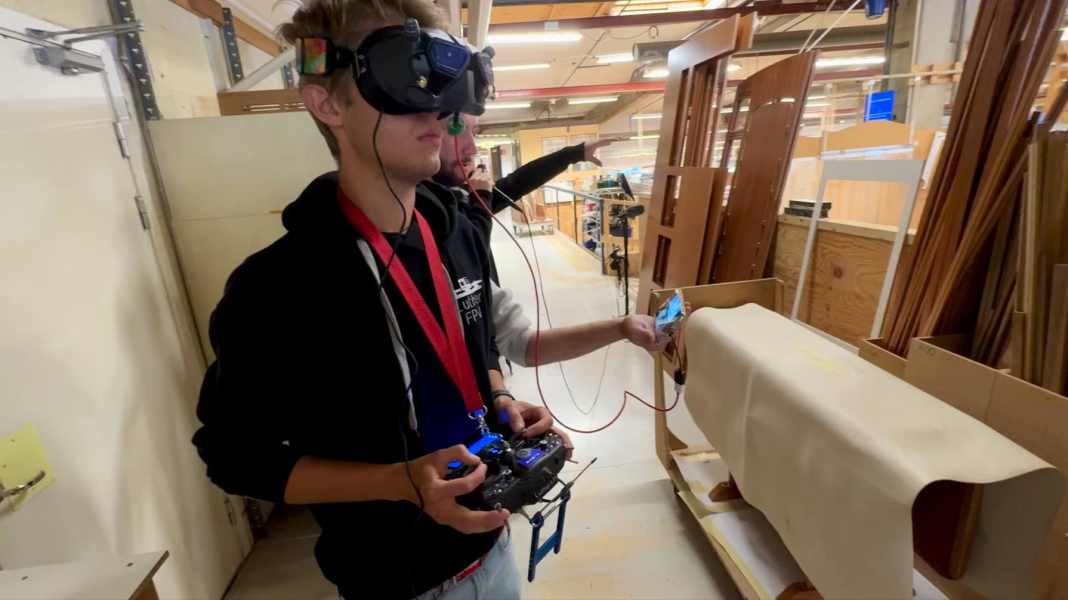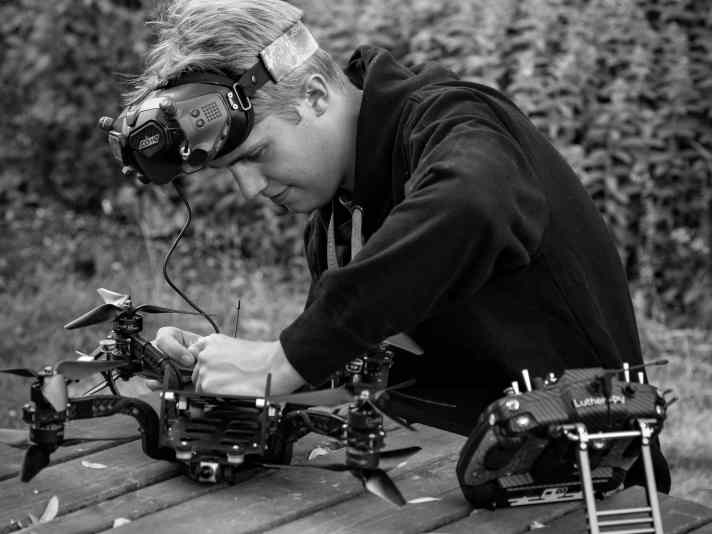
The flight through the shipyard halls in Ellös on the western Swedish island of Orust lasts a good twelve minutes. And it looks as if the film was shot in a single take, without interruption. This is what makes this unique production so appealing - but also the speed and, even more so, the drone's many hair-raisingly close encounters with all the complexities that yacht building in real life entails.
"We wanted to show that we always have 23 yachts in work at the same time," says Magnus Rassy. "And that's really the only way to do it." The shipyard boss, who is always open to new ideas, utilised FPV technology. FPV stands for "First Person View" and describes the special perspective from which both the drone pilot and the viewer see the video images: as if they were on board themselves.
Two young video producers set new standards
The impetus for the FPV production came from Anton Bylund, who has been producing videos for Hallberg-Rassy for several years. The most impressive one to date went online last winter and shows the new flagship in full detail: "Hallberg-Rassy 69 - The Movie" is the title. In just six months, it has been clicked on more than 680,000 times. The drone flight through the shipyard halls published just a fortnight ago does not top the detailed boat tour through the HR 69 in terms of views. But its production was certainly more complex and difficult.

Instead of flying himself, Anton Bylund quickly brought another young professional onto the team. "An extra, extra, extra good FPV pilot," says Magnus Rassy. Bylund found this in fellow countryman David Luther, who worked his magic behind the 3D goggles and at the controls of the remote control. But coolness and skill are by no means enough for shots like this.
Together with the shipyard manager, they needed a full day just to plan the flight routes and the entire logistics. When it came to filming, all the employees in production also had to be instructed. Anton Bylund counted down the start of each individual sequence using a megaphone: "five - four - three - two - one - and ... Action!"
In the film, you first get a bird's eye view of the final assembly, then the paint shop, on to the joinery and the wood store, the electrical department where cable harnesses are configured, the spray chambers for applying antifouling, briefly out into the open, into the Hallberg-Rassy Parts sales room, which can rival any chandlery, and then into the harbour and up into the rig of a boat that has just been launched.
Unlike many FPV videos without sound or films that are simply accompanied by meaningless music, the Hallberg-Rassy drone tour comes with authentic original sounds that enhance the experience considerably: you can hear hammer blows, conversations, footsteps and grinding machines as if you were there yourself. Anton and David hired a sound engineer especially for this purpose, who captured the atmosphere. So the sound doesn't come from the drone at all, although it has the same effect.
One day of planning, one day of shooting - and four weeks for editing!
Just how time-consuming such a production is can be summarised in one figure. It took four weeks from filming to the finished video. The "post production", which ultimately created a homogeneous overall work of art from snippets of images and sound, required by far the most time. This was the only way to realise a "seamless" flight. The longest take is right at the beginning: David Luther actually captured the images of the assembly of the large boats in one go; the rest is more segmented, without it being visible, of course.
When asked how often the drone has crashed or collided with obstacles during filming, Magnus Rassy remains silent with a smile: "I wouldn't dare say." One can assume a double-digit number. But crashes are simply part and parcel of such projects. Many FPV drones are therefore particularly small and manoeuvrable - and their rotors are protected by a kind of cage so that neither the aircraft nor the HR crew are at risk.
FPV videos have not yet really arrived in sailing as a whole. While they are now a permanent fixture in football or motorsport programmes, there is hardly any footage of boats or regattas that is worth watching. The best clips so far have been shot as part of the SailGP by one of the scene's cracks: Johnny FPV. The Ocean Race and the Imoca class have also incorporated short elements into their moving image programmes.

